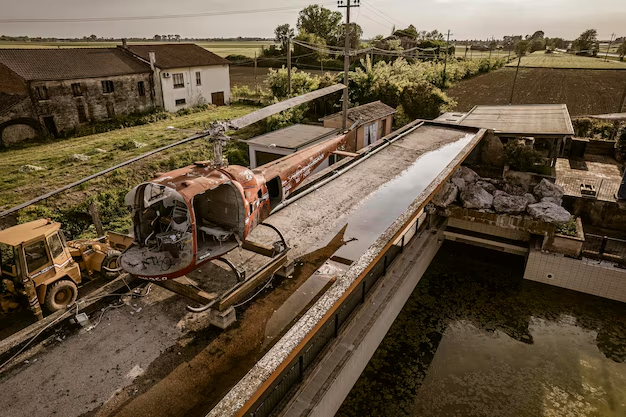Discover Effective Water and Waste Disposal Solutions for Rural Communities
In rural areas, achieving a reliable and sustainable water and waste disposal system is more than just a health necessity—it's a cornerstone for community resilience and growth. Implementing such solutions, however, can be challenging due to geographical isolation, limited infrastructure, and financial constraints. Let's explore some practical strategies that rural communities can employ to ensure clean water supply and efficient waste disposal, leading to improved quality of life.
Understanding the Needs
Rural communities often rely on natural water sources like wells, springs, or communal taps. However, these sources require proper management and protection to ensure safe drinking water. As for waste disposal, many rural regions lack formal systems, which can result in improper waste management, leading to environmental degradation and health issues.
Water Treatment and Supply Options
Community Wells: Establishing or restoring community wells is a cost-effective solution. Wells provide a centralized source of water, which can be treated at the point of collection.
Rainwater Harvesting: This offers a simple and eco-friendly alternative. By collecting and storing rainwater, communities can reduce the dependency on traditional sources, especially in regions experiencing seasonal water scarcity.
Water Filtration Systems: Simple point-of-use filters can be distributed to households, ensuring that the water accessed is safe for consumption. Filters can be mechanical, chemical, or even solar-powered.
Waste Management Techniques
Composting: Organic waste can be composted to provide nutrient-rich soil for community gardens, supporting local agriculture.
Biogas Facilities: These convert organic waste into usable energy, thus addressing the dual issues of waste disposal and energy access.
Plastic Recycling Initiatives: Incentivizing collection and recycling of plastics can reduce environmental impact and possibly provide an income stream through initiatives like upcycling programs.
Overcoming Financial Barriers
Government Aid Programs: Federal and state governments often offer grants or loans tailored to assist with infrastructure projects in underserved regions, including water and waste management.
Community Development Block Grants (CDBG): Managed by the U.S. Department of Housing and Urban Development, CDBG can fund a range of community development projects aimed at improving living environments.
Non-Profit Partnerships: Organizations focusing on water access or environmental health can provide technical support, resources, or funding for rural projects.
Financial Assistance and Educational Opportunities
For communities to successfully implement these systems, financial assistance and awareness are key. Raising local awareness about the available financial assistance programs is crucial to overcoming fiscal hurdles.
Programs and Resources:
- 🌿 USDA Rural Development Grants: Offers financial and technical assistance for water and environmental programs.
- 💰 Federal Grants for Water Infrastructure: Funding to enhance public water systems and improve sanitation.
- 🎓 Educational Workshops: Often sponsored by non-profits or government agencies, these workshops educate communities about sustainable resource management.
- 🏟️ Community Loan Funds: Local financial institutions or cooperatives may provide low-interest loans specifically for infrastructure projects.

- A Comprehensive Guide To The Senior Companion Program
- Comprehensive Guide To The Biotechnology Risk Assessment Research Grants Program
- Agriculture Innovation Center Demonstration Program: Your Comprehensive Guide
- The Agriculture And Food Research Initiative - Food Safety Challenge Area: A Guide For Consumers
- Agriculture And Food Research Initiative - Childhood Obesity Prevention: A Comprehensive Guide
- Understanding Federal Transit Grants For Rural Areas
- Understanding The Homeless Veterans' Reintegration Program
- Unleashing Opportunities With The YouthBuild Program
- Understanding Native American Housing Block Grants
- Unleashing The Residential Rehabilitation Assistance Program: The Definitive Guide